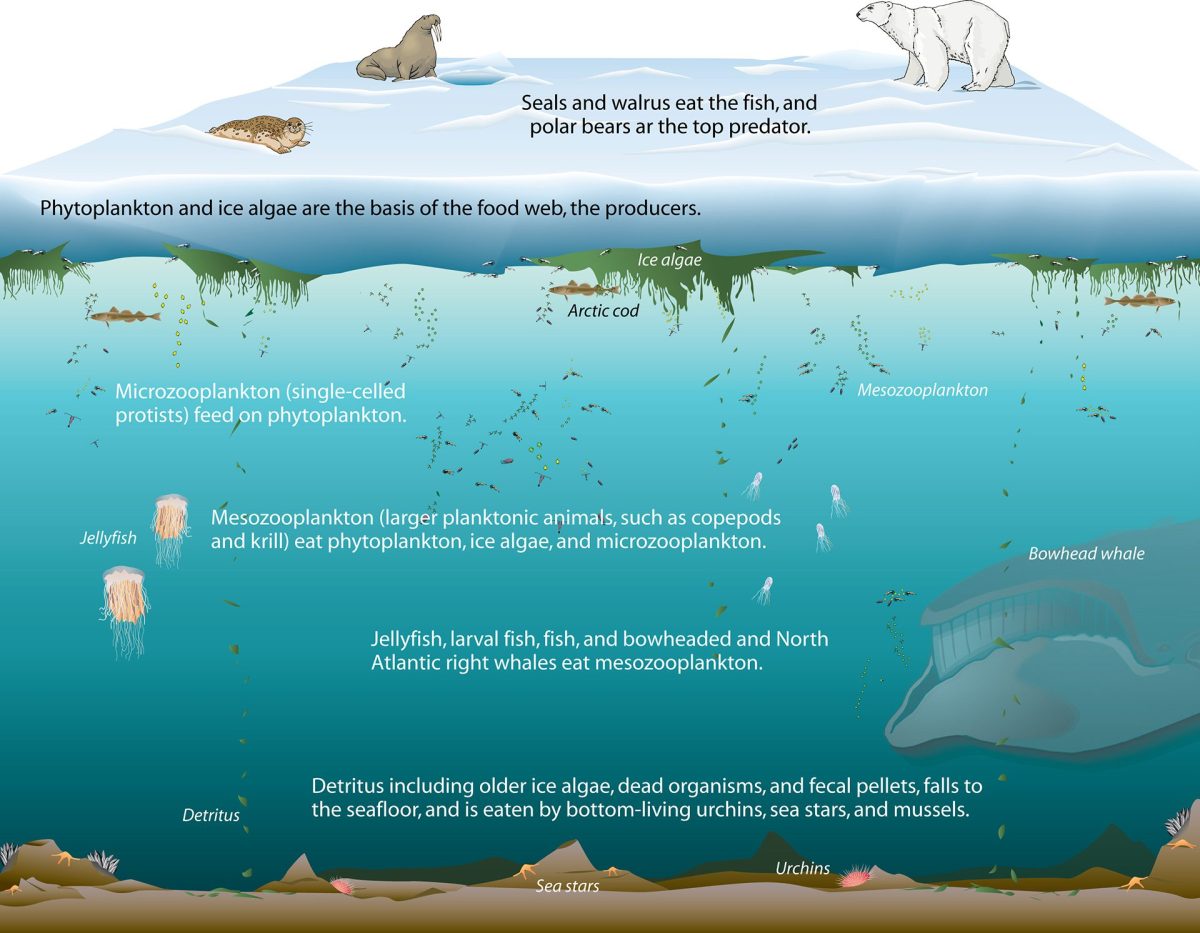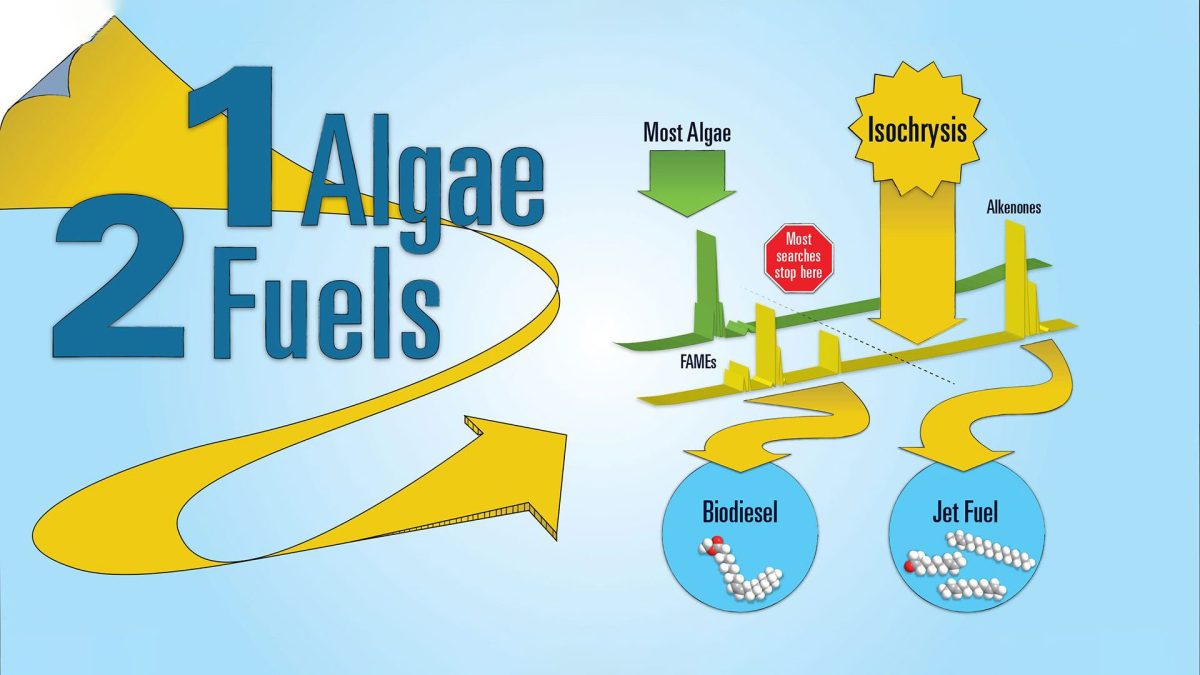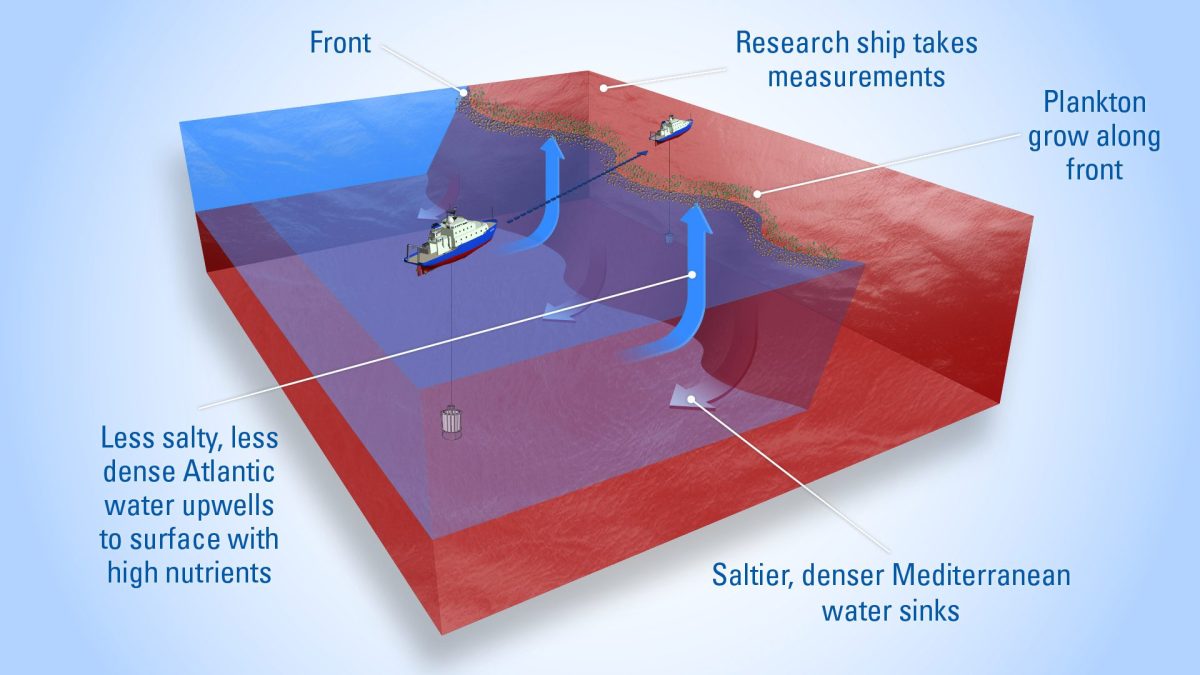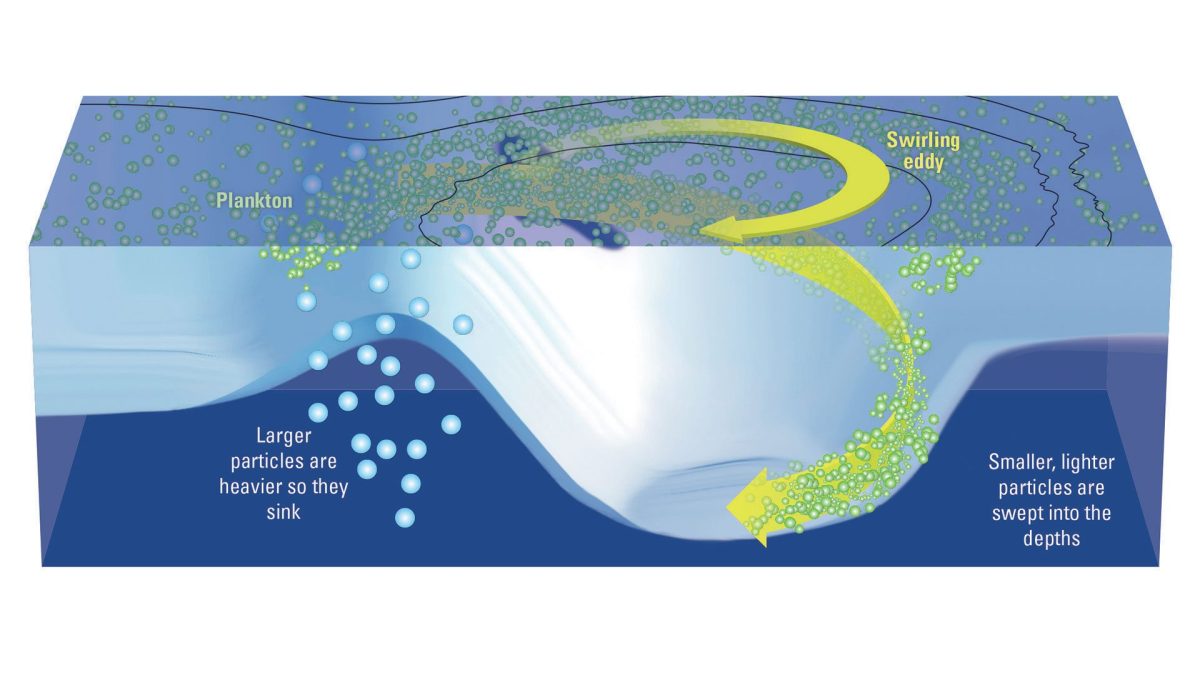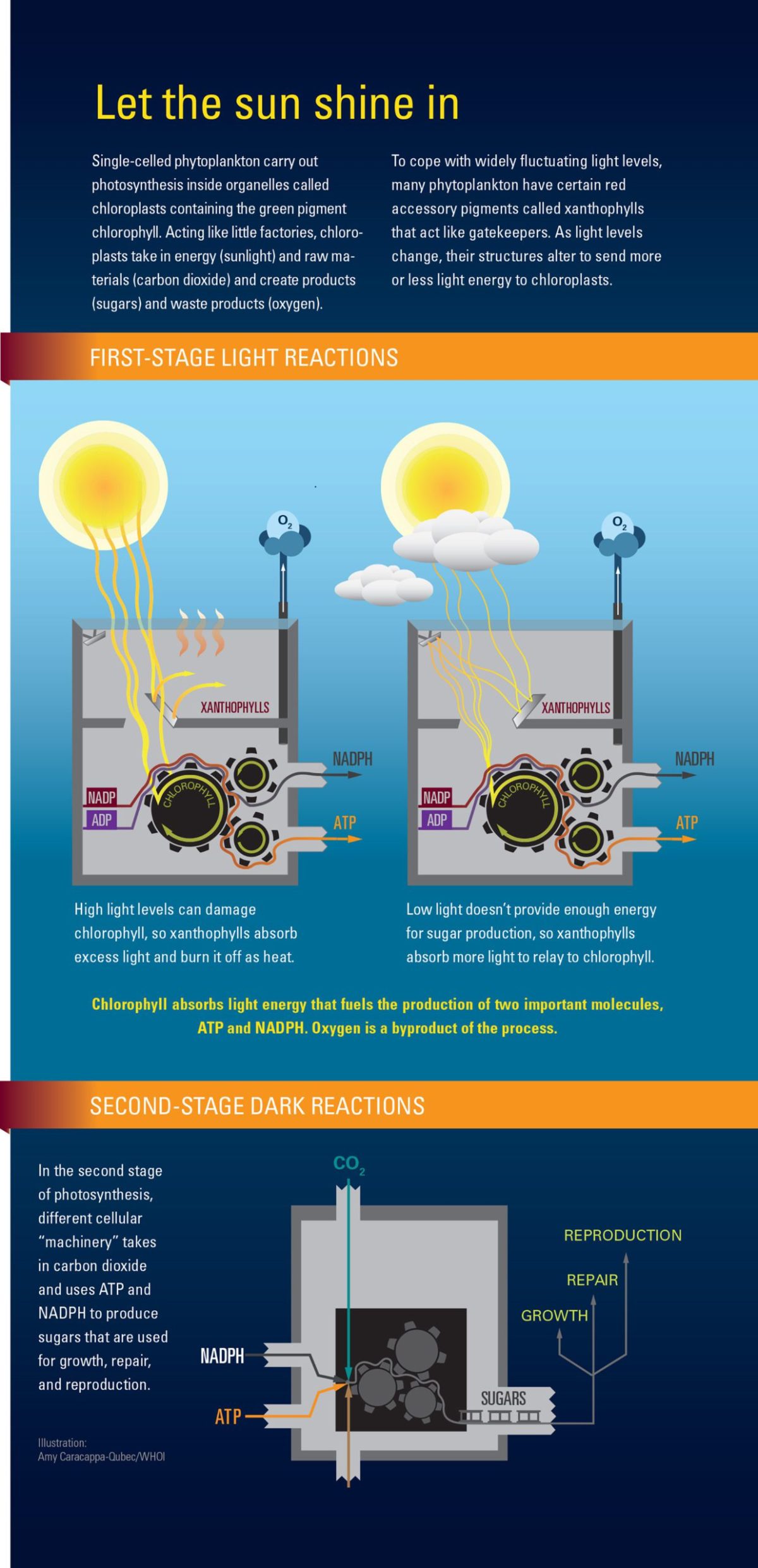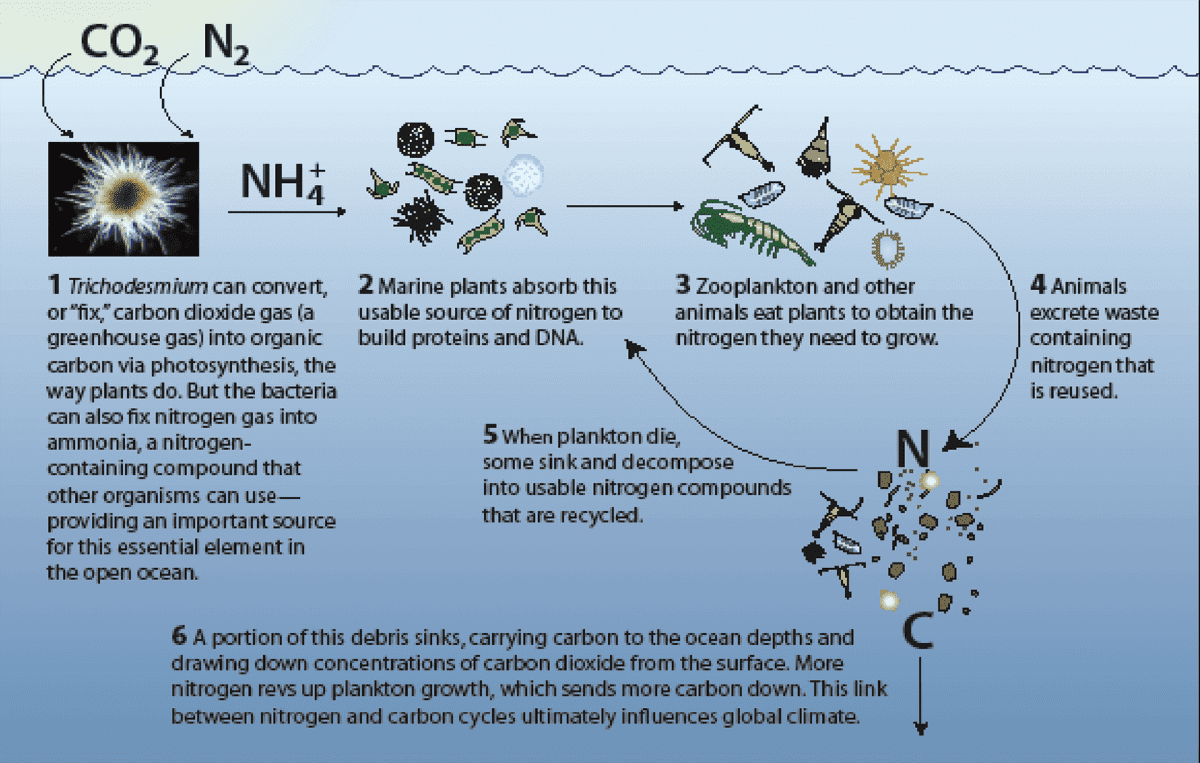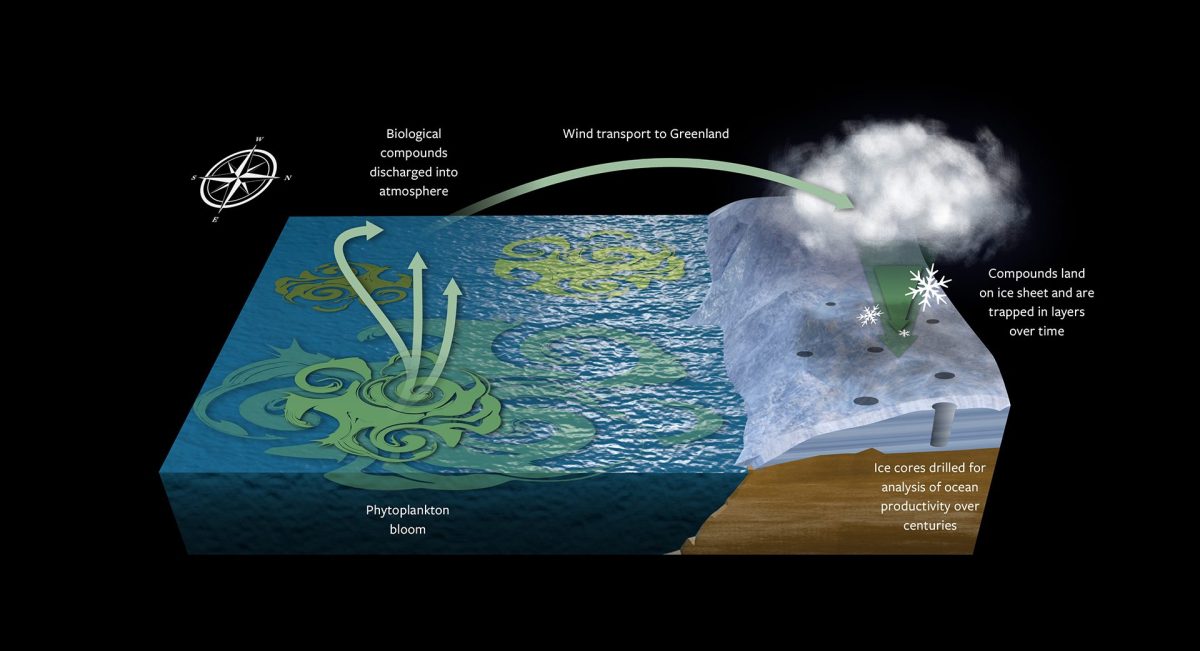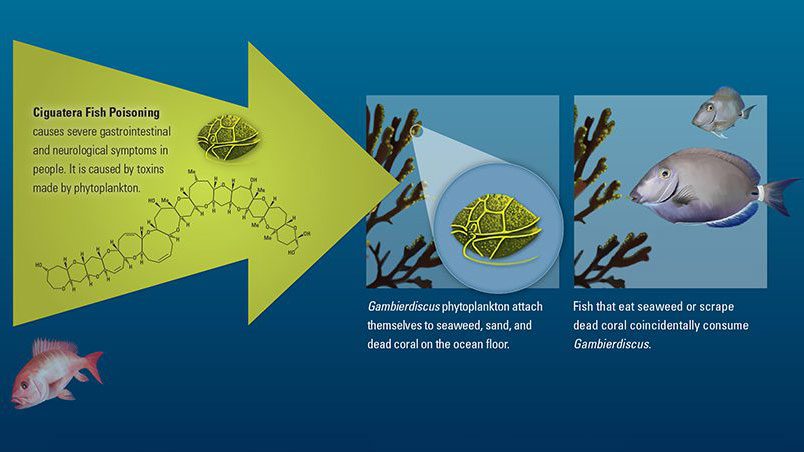In this section
Ocean Topics
- Climate & Weather
- How the Ocean Works
- Ocean & Human Lives
- Ocean Life
- Sustainable Ocean
- Ocean Tech
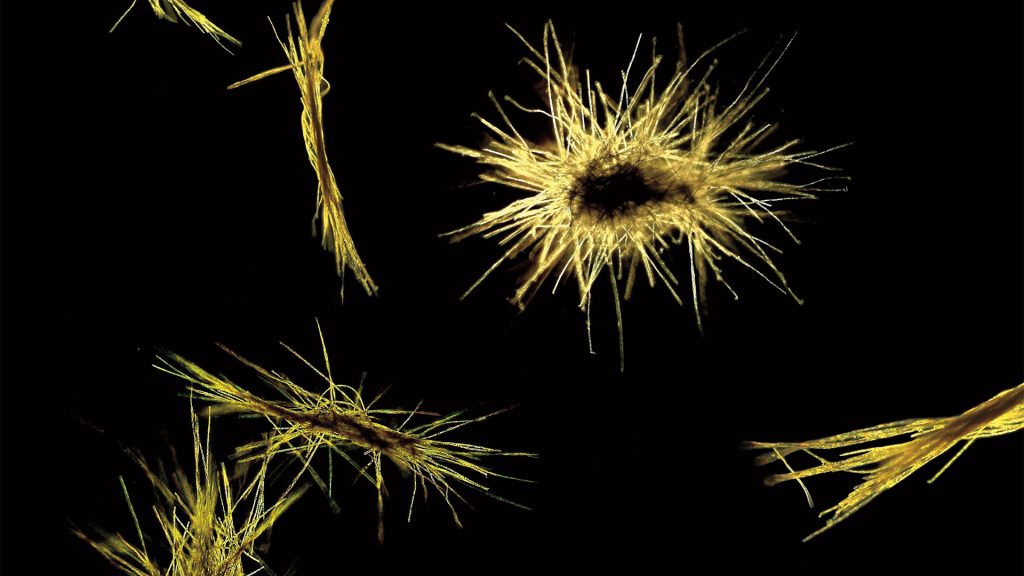
Species of the single-celled phytoplankton Trichodesmium form colonies with distinctive shapes. Individual colonies, shown here, are visible to the naked eye; where currents and winds gather many colonies together, the aggregation can be seen from orbiting satellites. (Photo by Abby Heithoff, MIT/WHOI Joint Program student)
Scientists usually divide plankton into three groups that align with major divisions of life. The plant-like organisms are phytoplankton (from phytos, Greek for plant); small animal plankton are zooplankton (from zoios, Greek for animal); and bacteria and archaea, minuscule cells that decompose material and recycle chemicals in the ocean, make up the bacterioplankton. But these categories are far from perfect.
For example, phytoplankton are not true plants. The vast majority are photosynthetic bacteria, including cyanobacteria, which are believed to be among the oldest organisms on Earth and the origin of the photosynthetic organelles in plant cells known as chloroplasts. Larger phytoplankton are single-celled algae also known as protists—tiny organisms that also contain chloroplasts. Many photosynthetic protists are capable of movement and some also hunt and eat other single-celled organisms.
Many creatures called zooplankton are also tiny protists, but the category simultaneously includes animals on the other end of the size scale. Jellyfish are among the simplest animals on Earth and are considered plankton, but some individuals have been measured at 130 feet long, longer than a blue whale. Other zooplankton, even though they are transparent and soft-bodied, are chordates, complicated animals related to fish and humans. Finally, although “plankton” comes from the Greek word planktos, meaning “drifting,” some zooplankton can swim up to 25 feet a minute and up to a mile a day, migrating from near the sea surface during the day to half a mile down during the day and back again.
Because of these complications, scientists find a scheme based on size a better way to divide plankton, with categories ranging from femtoplankton, for marine viruses, to megaplankton, for large gelatinous animals like jellyfish.
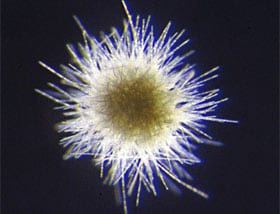
A puff colony of Trichodesmium thiebautii. Trichodesmium is sometimes referred to as both bacterioplankton and phytoplankton. (Photo by John Waterbury, Woods Hole Oceanographic Institution)
Articles Related to Plankton, By Any Other Name
From Oceanus Magazine
The Living Breathing Ocean
Forecasting Where Ocean Life Thrives
PlankZooka & SUPR-REMUS
Illuminating an Unexplored Undersea Universe
Specks in the Spectrometer
Setting a Watchman for Harmful Algal Blooms
Short-circuiting the Biological Pump
A Telescope to Peer into the Vast Ocean
News Releases
Heidi Sosik Selected as a Fellow of The Oceanography Society
A ‘B-12 Shot’ for Marine Algae?
News & Insights
Valentine’s Day Courtship Tips from the Ocean
Recognizing Massachusetts Right Whale Day
What happens to natural gas in the ocean?
WHOI working to address ocean acidification; protect region’s vital shellfish industry
Unicorns of the Arctic face a new potential threat
WHOI in the News
NASA’s new PACE observatory searches for clues to humanity’s future
A new satellite could help scientists unravel some of Earth’s mysteries. Here’s how
Dean Bumpus: Tracking Ocean Currents
Long-running plankton study to resume off of Maine
Researching phytoplankton 2000 miles from shore aboard the R/V Atlantis
How a Volcanic Eruption Set Off a Phytoplankton Bloom
WHOI Study Shows Warmer Waters Affecting Phytoplankton
Features
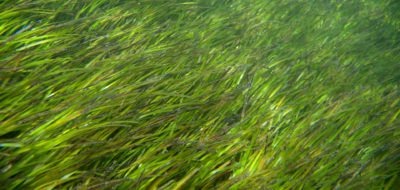
Seagrass meadows are plants adapted to live a completely submerged life in the salty shallows.
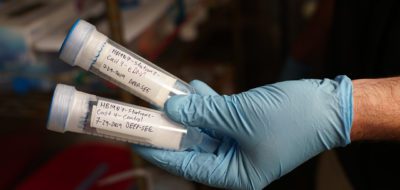
Environmental DNA (eDNA) is essentially DNA collected from the environment. As animals swim through the ocean, they're constantly releasing DNA…
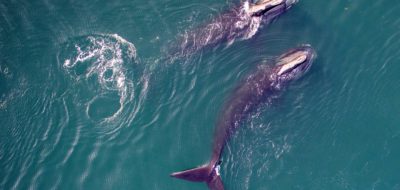
Northern right whales are large baleen whales known for their distinctive callosities and slow-moving nature. Read our FAQ about this…
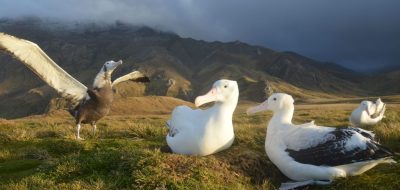
Seabirds have adapted to life in an ocean environment. There are many species of seabirds, and they vary greatly in…
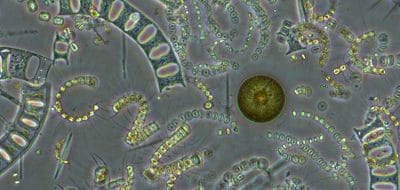
Ocean plants are critical to marine life—they are an important food source, they provide oxygen to surrounding marine life, and…
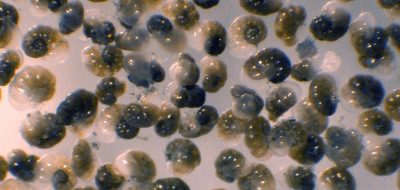
Benthic animals live on the sea floor and are typically invertebrates, such as sea anemones, sponges, corals, sea stars, sea…
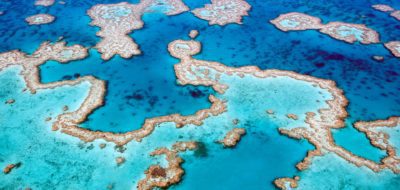
A healthy reef protects coastlines from wave damage, plays a critical role in providing food, boosts the economy, and provides…
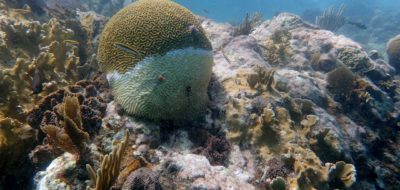
Stressors can affect organisms living on the reef or they can affect the corals, themselves. When corals die, other organisms…

